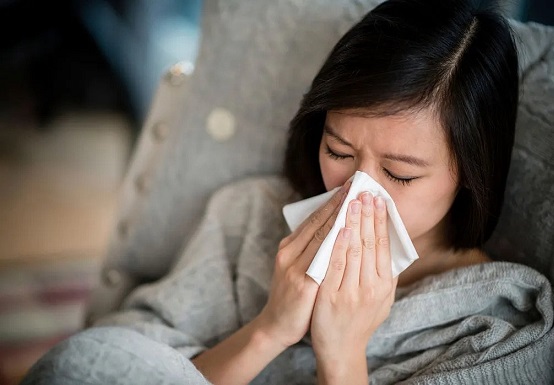
Nasal congestion, runny nose, and sneezing? Itching in the nose, roof of the mouth, throat, eyes, or ears?
These are symptoms of a condition known as Allergic Rhinitis (AR) or Hay Fever which is estimated to affect about 20% of the population in Singapore. In the last few years, given the increase in vehicles on the road and pollutants from the haze, AR is becoming more prevalent. We learn more from Dr Leong Jern-Lin, Consultant Ear Nose and Throat Surgeon, of the Ascent Ear Nose Throat Specialist Group.
The body responds to specific allergens – the most common being dust mites and pollen – by releasing histamine, a natural chemical that defends the body from the allergen.
This chemical called the Immunoglobulin E (IgE) causes Allergic Rhinitis (AR) which is inflammation of the mucous membranes of the nose, eyes, middle ear, sinuses, and pharynx. The condition can have many uncomfortable symptoms such as a runny nose, sneezing, and itchy eyes.
AR can be either seasonal or perennial, which means they last all year. Even though this may not be a life threatening condition, it may significantly impair the quality of life. This may include daytime sleepiness, snoring, hearing loss as well as poor concentration and memory.
The condition also affects children but it presents itself with different symptoms. They may sweat during sleep, breathe through the mouth, experience restless sleep or have impaired learning ability. During the formative childhood years, chronic mouth breathing interferes with normal facial growth. This results in a smaller upper airway passage which increases the risk of obstructive sleep apnea and leads to an increased risk of cardiovascular problems in later years. Studies have shown that AR sufferers may score a grade lower in school performance if not treated.
Knowing Allergic Rhinitis from Sinus
There are other nasal conditions that present with symptoms similar to AR such as chronic sinusitis (CRS), which is often mistaken for AR. This condition is an inflammation of the lining inside the sinuses caused by bacterial or fungal infections.
The diagnosis involves a doctor’s complete review of medical history and physical examination. Nasal endoscopy may be performed to inspect nasal tissues for a proper diagnosis. This condition would require prolonged antibiotic treatment – from two weeks to three months. Steroid nasal sprays are also prescribed to relieve anti-inflammatory actions.
In the case of acute sinusitis, they usually resolve on their own. In addition to antibiotics and decongestants, self-care techniques are usually all you need to ease symptoms.
Diagnosing the allergy
To know if one has AR requires a clinical diagnosis. One of the most commonly used ways to diagnose this condition is to use skin prick tests or testing for specific IgE in the blood. During this test, the doctor places a variety of substances onto your skin to see how your body reacts to each one. Usually, a small red bump appears if you are allergic to a substance.
Another common allergy test is a blood test, sometimes referred to as a radioallergosorbent test (RAST). The RAST measures the amount of IgE antibodies to particular allergens that are present in the blood.
Occasionally, a computer tomography (CT) scan of the sinus maybe ordered to exclude other nasal conditions.
Treatment
The treatment of AR depends on the severity of the illness.
Common medications for mild diseases include oral antihistamines, mucolytics and steroid nasal sprays. However, these require regular usage and only treat the symptoms. For those who suffer from bad nasal congestion, a small procedure to reduce the swollen nasal inferior turbinates with radiofrequency is very helpful and can have longer lasting effects. This can be easily done in an outpatient setting under local anaesthesia.
One of the most common and safest method is Sublingual immunotherapy (SLIT). This can be administered on children as young as six years old onwards. SLIT requires the patient to drop the medication daily under the tongue to build up their ‘immunity’. The whole treatment will go on for a duration of at least three years.
Allergy tends to improve as one gets older but this may take many years.
Immunotherapy is another that involves introducing the allergens into the body at controlled doses, starting with very small doses and escalating it upwards slowly so that the body builds tolerance towards the allergen. Treatment duration is over three to five years. This is the only known permanent cure for AR.
Lastly, there is also the option of surgery but it should only be reserved for patients with persistent nasal obstruction despite treatment.
Outlook
The outcome of treatment depends on your unique condition. Seasonal AR is usually not severe, and can be managed well with medications. The patient is advised to see an Ear-Nose-Throat (ENT) specialist for a thorough evaluation and diagnosis. A nasoendoscopic evaluation would often be required.
Article contributed by Dr Leong Jern-Lin, accredited doctor from Mount Alvernia Hospital.
This article is taken from our MyAlvernia Magazine Issue #26. Click here to read the issue on our website or on Magzter.